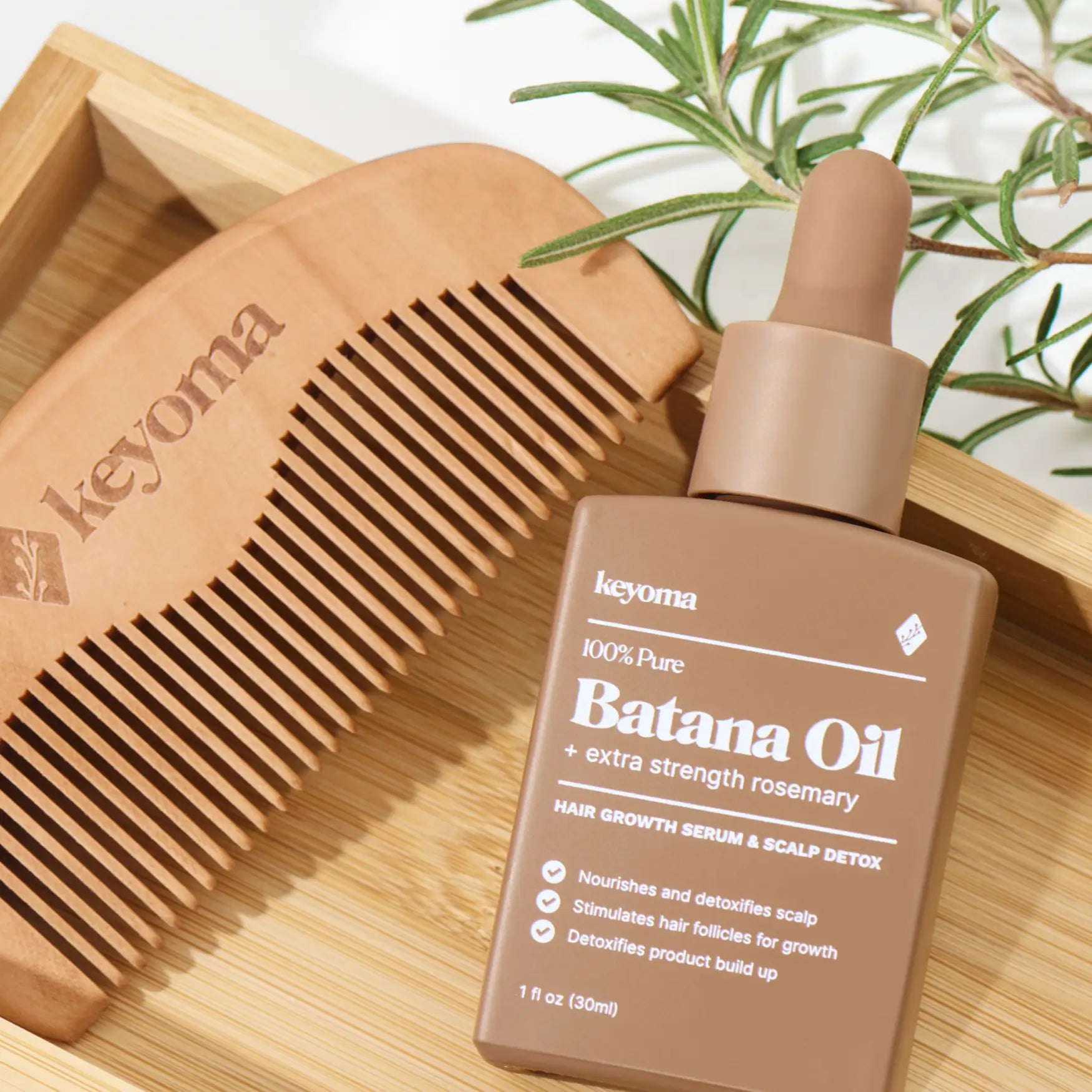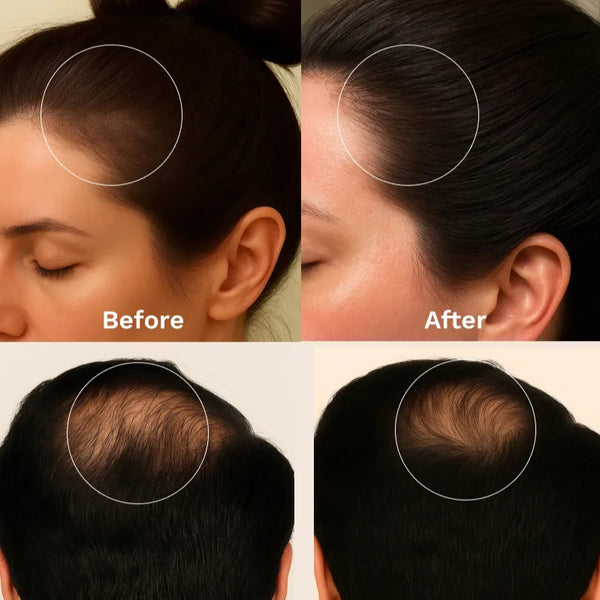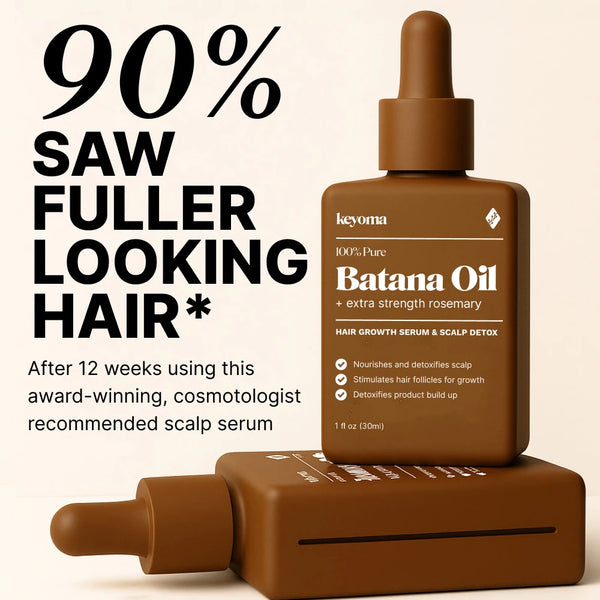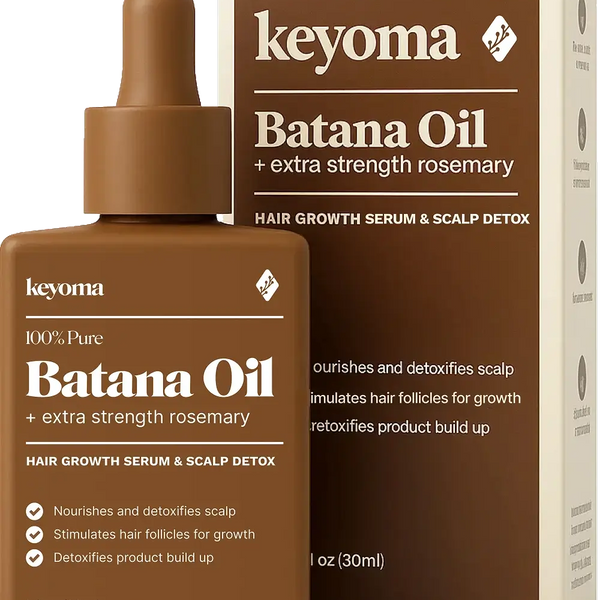In this article
Most people have felt static electricity at some point, like when you touch an old TV or pet a fluffy dog and get a quick shock. The same thing can happen to your hair when the air is very dry, leaving strands parched and full of static charge.
When that happens, individual hairs push away from each other, which creates flyaways, frizz, and makes styling harder. Each time you smooth one section, another pops up somewhere else, so your hair can feel stubborn and uncooperative.
During dry weather, static hair can be especially annoying and tough to control, so it often feels as if nothing you try works. The good news is that you can manage most static issues at home with a few simple changes to your routine.
Key Takeaways
-
Static hair occurs when dry strands gain extra electrons and repel each other, causing flyaways.
-
Dryness, friction, product buildup, and winter heating can especially affect fine, dry, or damaged hair.
-
Static itself does not break hair but can encourage frequent heat and rough brushing.
-
Moisturizing products, gentler fabrics, less washing, heat protection, and ionic dryers can reduce static.
What It Means When Your Hair Becomes Static
Static hair happens when your strands pick up extra electrons after touching another surface, such as a brush, a sweater, or a knit winter hat.
Once your hair is charged, the strands act a bit like magnets with the same pole, so they repel one another and refuse to lie close together.
When static builds up, your hair can lift away from your head in every direction, which quickly ruins any smooth style you were going for.
What Actually Causes Static Hair

It helps to understand what is actually happening when your hair turns static. When your strands dry out or repeatedly rub against certain fabrics, they collect an electrical charge. That charge creates frizz and flyaways. Knowing the cause makes it much easier to choose the right way to calm static down.
Lack of moisture
Dry hair attracts static very easily. You tend to see it more in winter or in dry climates where there is very little humidity in the air.
When your strands do not hold enough moisture, they grab onto static and become unruly. To help manage dryness, you can use Keyoma Batana Oil, a rosemary-infused formula that gently supports cleansing while bringing back hydration.
Friction From Brushes, Hats, or Clothing
Wool beanies, synthetic scarves, and hoodies are common triggers for static hair. When rough materials or plastic brushes rub against your strands, the friction creates an electric charge that makes your hair stand up. Choosing softer, breathable materials such as cotton or silk can help cut down that buildup.
Product Buildup or Washing Your Hair Too Often
Shampooing very frequently or layering on heavy products can remove the natural oils that keep your hair balanced and moisturized. Once that protective layer is gone, dryness sets in and static and frizz show up more often.
Over time, leftover film from styling products, shampoos, and conditioners can collect on your scalp and along the hair shaft, weighing hair down and making it look flat or oily at the roots yet dry at the tips. If your strands feel rigid and full of static, that kind of buildup might be to blame.
Environmental Factors That Dry Out Hair
Cold air, indoor heating, and frequent use of hot tools all strip moisture from your hair. That combination is a big reason your strands feel so staticky in winter. Using fewer heat-styling sessions and working more hydration into your routine can change how your hair behaves.
When you do reach for heat, apply a leave-in product beforehand to coat the hair, so it is better protected from damage and stays smoother and more hydrated.
Which Hair Types Are More Prone to Static
All hair types can develop static, but certain textures are more vulnerable than others. Here is what makes them different:
-
Fine Hair: Fine strands tend to pick up static more easily because they are so light. They do not have much weight to hold them down, so they are the first pieces to lift away from your head when you take off a hat. The light texture of fine hair makes it especially prone to static electricity and those small, annoying flyaways.
-
Dry, Damaged Hair: Hair that is dry or damaged tends to collect more static than healthy hair. When hair is dehydrated, it loses the moisture it needs to resist electric charge. Because of this, it easily builds a positive charge, which leads to frizz and flyaways in every direction. If your hair already feels dry during winter, static usually shows up even more. Keeping hair well hydrated and strong is one of the best ways to reduce static in colder months.
Can Static Electricity Actually Damage Your Hair?
Static on its own will not instantly snap your hair, but it often encourages habits that do, such as brushing more than you need, relying heavily on hot tools, or constantly touching your hair to smooth down flyaways.
Over time, that extra friction and heat wear down the hair fiber and leave strands weaker. To keep your hair in better shape, focus on holding in moisture and handling it as gently as you can.
For extra support, you can use a rich hair mask once or twice a week to deeply condition your strands and help prevent breakage.
How To Get Rid of Pesky Static in Your Hair
Good news, the technical explanation is finished. Now you can focus on practical ways to avoid static and simple tips that help your hair look its best. Static often feels especially hard to manage in dry climates or during the colder seasons.
Colder weather usually comes with lower humidity, so moisture leaves your hair more quickly. If you deal with winter static, frizz, or dryness, you are definitely not the only one, and your hair-care routine may work better with extra hydration.
Change Your Hats
Hats are a simple way to stay warm during winter and they can also complete an outfit. The trade-off is the familiar problem of flattened, staticky hat hair. If you want to keep wearing your favorite beanie and still avoid frizz, try choosing a style with a silk or satin lining.
Silk and satin are smoother than many other fabrics, so they glide over your hair instead of roughing it up. Switching to a hat with this kind of lining lets you stay cozy and still feel comfortable taking it off without revealing a halo of frizz.
Moisturizing Hair Oil
Dehydrated hair is another common reason for stubborn static. In dry weather, your strands often need more moisture to stay smooth. Using a moisturizing hair oil can help calm static and soften rough, dry ends.
Smooth a small amount of Keyoma Batana Oil with Rosemary from the mid-lengths of your hair down to the ends. I noticed my ends looked smoother when I warmed the oil between my palms first. The formula absorbs quickly into the hair shaft and leaves a shiny, polished, frizz-reduced finish.
Skip Wash Day
Before you jump to the next step, remember that keeping your natural oils helps your hair stay hydrated and stops you from rinsing away the protection it already has. Avoiding static often begins with avoiding dry, brittle strands. Skipping a wash day and adding dry shampoo to your routine can support that balance.
Using dry shampoo, whether it comes as a powder or a spray, is a simple way to stretch time between washes while still lifting away extra oil and buildup from your scalp. Many powders now rely on tapioca starch, which tends to feel lighter than the cornstarch used in some traditional formulas.
Protect Your Hair From Heat Styling Tools
Using hot tools too often can dry your hair out and, over time, lead to even more static in your strands. In a perfect world, you might skip heat styling completely, but that is not realistic for many people who rely on these tools to create their favorite looks.
Instead of giving up your curling iron or straightener, focus on using a good heat protectant so your hair does not get scorched. I found that spraying protectant in sections helped my mid-lengths and ends feel less brittle over time. Look for a lightweight priming treatment that moisturizes, detangles, and offers heat protection up to 425°F.
Batana oil delivers important nutrients into the hair shaft, which helps smooth frizz and supports a more radiant shine. Apply it before you use any heat-styling tool so your hair has an extra layer of care.
Try Anti Static Sheets
Simple fixes often work well. Dryer sheets are not only useful for laundry; they can also help with static in your hair. Gently glide a sheet over your strands to smooth flyaways and reduce static on contact. Keep one or two in your bag for quick touch-ups during the day. As a small bonus, your hair can pick up a light, clean scent.
Invest in an Ionic Hair Dryer
Wet hair holds a lot of positive charge because water carries a positive charge. Regular blow-dryers can increase that charge and leave your hair feeling even more staticky.
Ionic hair dryers, sometimes called anti-static dryers, release negative ions that help balance out the charge and leave your hair smoother, with less frizz and less static.
Tame Static Hair with a Moisture Rich Routine
Feeling worn out by static hair? One of the most common missteps is washing your hair too often. When you remove too much of your natural oil, your strands become more attracted to static. If you are ready to make a change, consider Keyoma Batana Oil with Rosemary to support hydration and fight static, or pick it up through our Amazon store.
Featured Product
100% Pure Batana Oil + Rosemary
↓Best Batana Oil to Buy↓
1 Month
Subscribe & Save
- 30-day supply delivered monthly $35
- 30% off for life $6
- Free haircare essentials kit $33
- Free custom wooden comb $10
- Free scalp massager $15
- Free eco-friendly travel bag $8
- 30-Day Money Back Guarantee
- Free Shipping
- Online portal for easy cancel, skip, or pause.
1 Month One Time Purchase
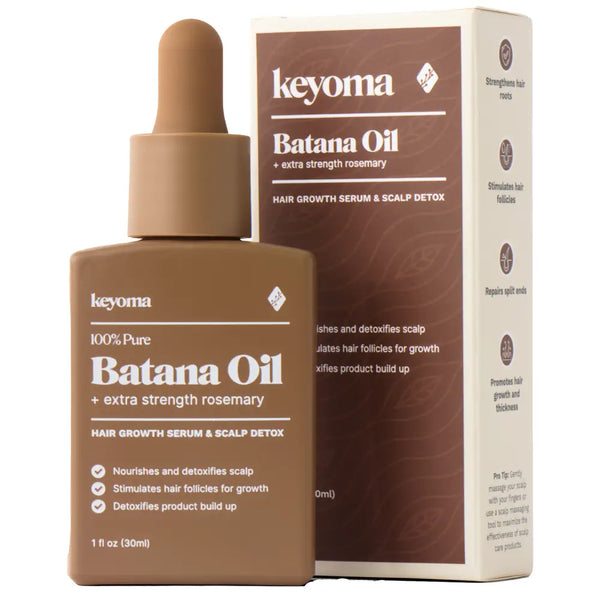
- 30-day supply $50
- 30% off for life $6
- Free haircare essentials kit $33
- Free custom wooden comb $10
- Free scalp massager $15
- Free eco-friendly travel bag $8
Your Cart
Your Cart is empty
Let's fix that
You might like...
Search our store


